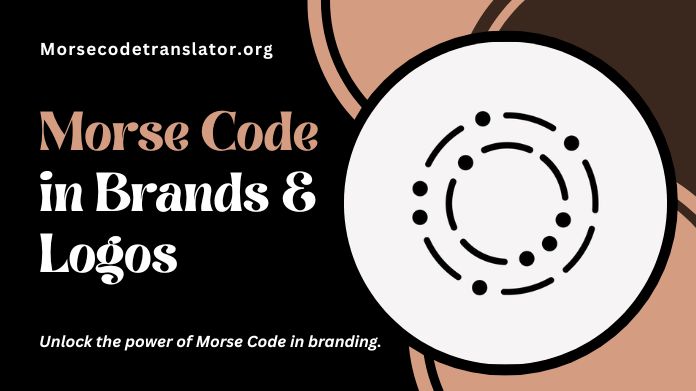In today’s fast-paced world of branding and marketing, companies are constantly seeking innovative ways to stand out and connect with their audience. One unique emerging trend is integrating Morse code in brands and logos.
Morse code, with its rich history and universal recognition, offers companies a creative avenue to convey their message subtly yet meaningfully. From fashion labels to tech giants, many brands have incorporated Morse code into their logos, packaging, and marketing materials to add depth and intrigue to their brand identity.
In this Morse Code Translator article, we will explore the fascinating world of Morse code branding, examining how companies leverage this timeless communication method to enhance their brand image and engage with consumers on a deeper level.
Join us as we delve into the Morse code brand phenomenon and uncover the secrets behind its growing popularity in marketing and design.
What is Morse Code?
Morse code encodes text characters as sequences of two different signal durations, typically represented by dots and dashes or short and long signals. Samuel Morse and Alfred Vail invented it in the early 1830s for use with telegraph systems.
Each character in the Morse code represents a unique combination of these dots and dashes, allowing messages to be transmitted efficiently over long distances via telegraph wires or other forms of communication.
The simplicity and versatility of Morse code have made it a widely used communication method, particularly in telecommunication, aviation, and maritime navigation. Despite the advent of modern communication technologies, Morse code remains relevant today.
It is still taught to amateur radio operators and used in emergencies where other forms of communication may be unavailable. Its resilience and enduring legacy continue to fascinate and inspire people worldwide.
How to Use Morse Code in Brands and Logos?

Using Morse code in brands and logos can add a unique and memorable touch to your brand identity. Here’s how you can effectively use Morse code in your branding:
1. Select a Message: Choose a short and meaningful message representing your brand, such as your company name, slogan, or a key attribute.
2. Translate to Morse Code: Utilize a Morse code translator or chart to convert your chosen message into Morse code. A combination of dots and dashes will represent each letter and character.
3. Incorporate into Design: Seamlessly integrate the Morse code pattern into your logo design. You can incorporate it as part of the typography, graphic elements, or a hidden feature within the logo.
4. Ensure Legibility: Ensure the Morse code elements are clear and legible within the logo design. Avoid overly intricate designs that may obscure the Morse code message.
5. Test for Clarity: Test the logo design to ensure the Morse code message is easily recognizable. Ensure that it remains distinguishable at various sizes and resolutions.
6. Maintain Brand Consistency: Ensure that the use of Morse code aligns with your brand’s overall aesthetic and messaging. It should complement your brand identity rather than detract from it.
By following these steps, you can effectively incorporate Morse code into your brand’s logo, adding depth and intrigue while maintaining clarity and relevance to your brand identity.
Final Note
Integrating Morse code in brands and logos offers a creative and distinctive way to communicate a brand’s identity and message. Following the steps outlined, brands can effectively utilize Morse code to add depth, intrigue, and memorability to their visual identity.
Through careful consideration of message selection, translation, design integration, and testing, brands can ensure that Morse code elements are seamlessly incorporated into their logos while maintaining clarity and legibility.
Furthermore, brands should maintain consistency with their overall brand aesthetic and messaging to ensure that Morse code usage enhances rather than detracts from their brand identity.
With creativity and attention to detail, Morse code can become a powerful and engaging element of a brand’s visual identity, resonating with audiences and leaving a lasting impression.
